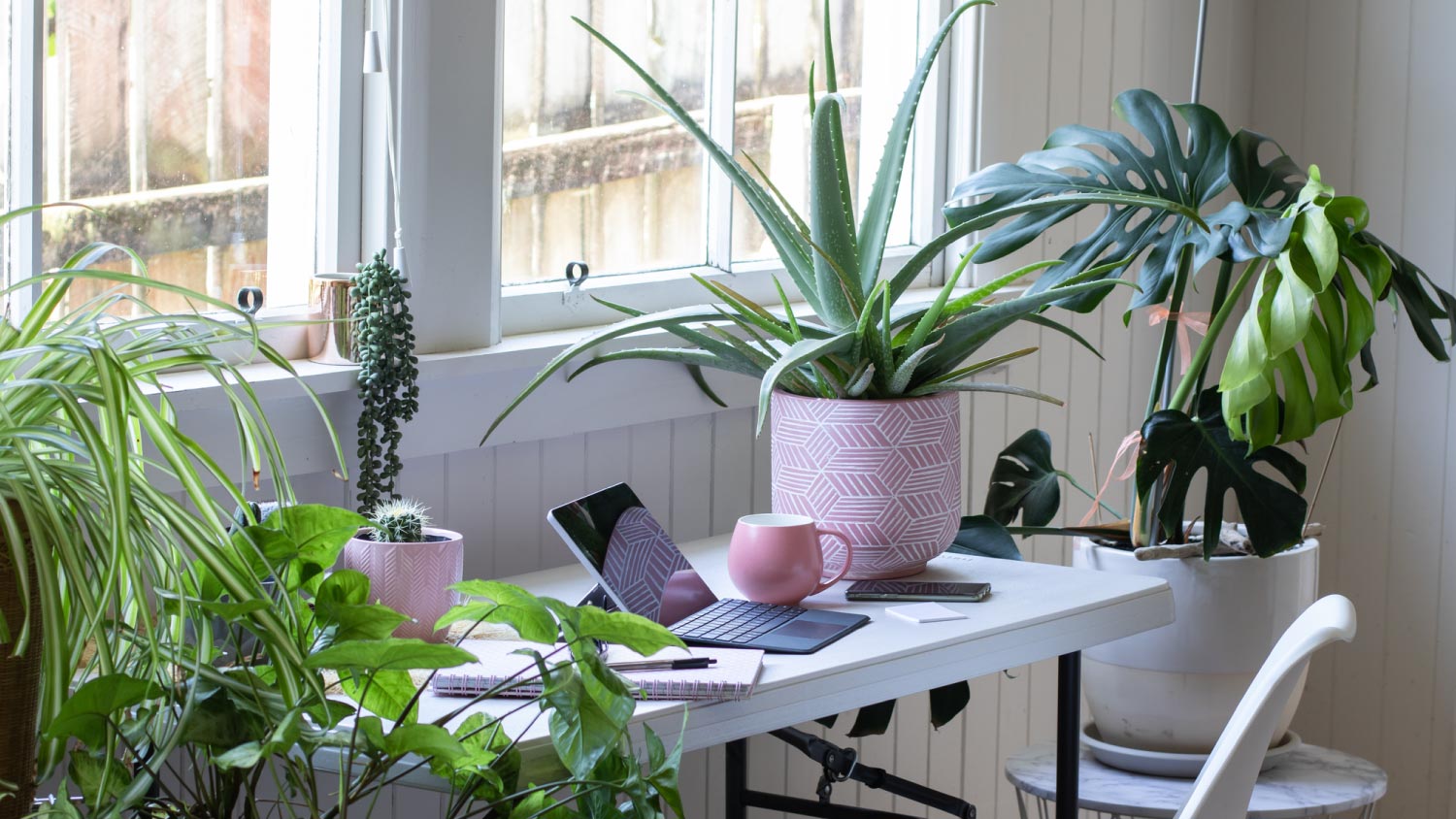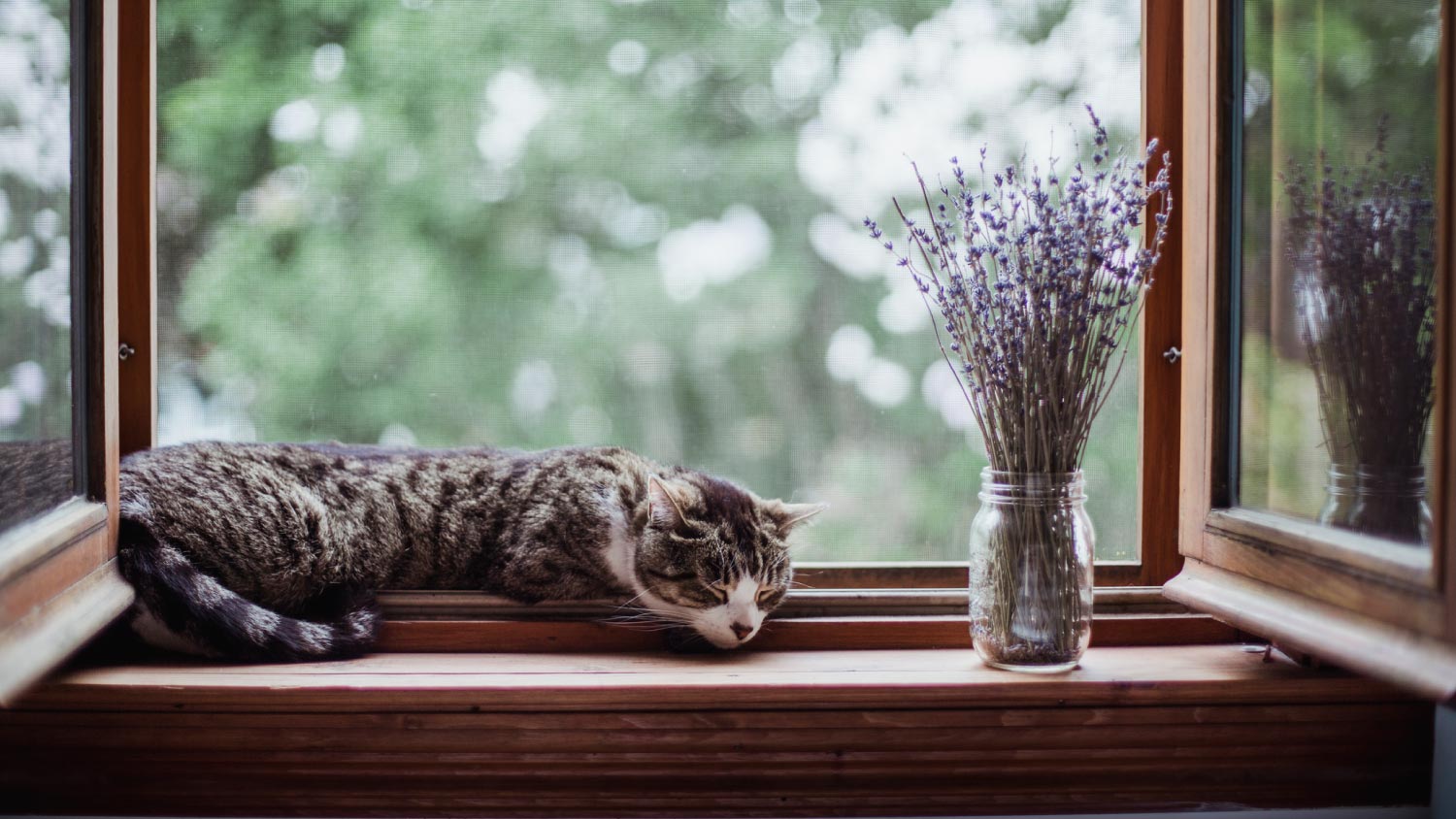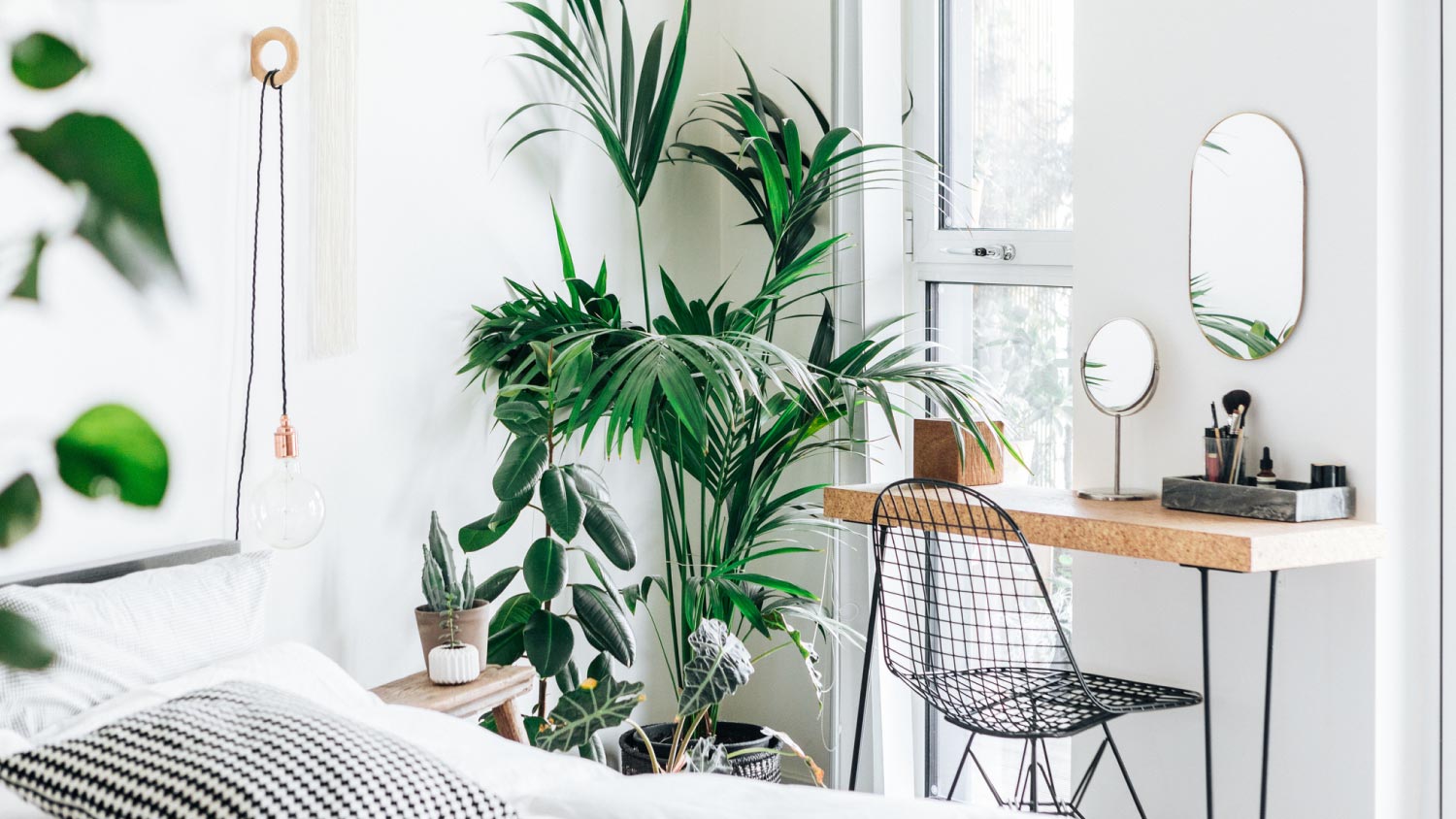The 10 Best Bedroom Plants for Better Sleep and Cleaner Air
The best plants for a bedroom include peace lily, aloe vera, snake plant, spider plant, areca palm, English ivy, and lavender


Your bedroom is your refuge. It's where you sleep, relax, and think. As a result, you should create an environment that helps you thrive—and plants are a great way to do that.
But what are the best bedroom plants? Here are the top choices and what makes them perfect for the role.
1. Peace Lily
The peace lily is native to Central and South America. It's a popular indoor houseplant because it thrives in shade and doesn't need much sunlight, and only needs watering once per week.
It certainly has a striking and elegant appearance when it flowers. A large, white petal surrounds a yellow stalk. There can be multiple flowers on one plant.
Health benefits: The NASA Clean Air Study found that the peace lily is good for cleaning contaminants that can cause cancer, like benzene and formaldehyde. The study also found that this plant is good for people with allergies.
Safety: Toxic to cats and dogs.
2. Aloe Vera

We're all familiar with the healing properties of the aloe vera plant, which comes from the Arabian Peninsula. But it's also popular as a potted plant. The plant thrives in arid climates because it doesn't need a lot of water to survive, which makes it great as a low-maintenance bedroom plant. However, it does require plenty of sunlight.
The plant also flowers as long as it is at least four years old. They usually bloom in the summer but can do so sporadically throughout the year.
Health benefits: Aloe vera sap is commonly used for medicinal and cosmetic purposes, such as soothing burns or moisturizing skin.
Safety: Toxic to cats and dogs. It can cause vomiting and diarrhea in pets.
3. Snake Plant
The snake plant is named for its long, wavy, snake-like leaves. It is native to West Africa and is highly resistant to drought, making it a low-maintenance plant that can be kept in the bedroom. They also don't need much sunlight.
Because of how easy it is to care for them, they're often recommended for beginner horticulturists. The snake plant is larger than a lot of other plants so it will need its space to grow.
Health benefits: The NASA Clean Air Study found that snake plants are capable of filtering indoor air from toxins, such as benzene, formaldehyde, xylene, and toluene—at least marginally. The plant also keeps the air moist, so it's good for people who suffer from allergies.
Safety: Toxic to cats and dogs. The plant can cause gastrointestinal problems in pets.
4. Spider Plant

The spider plant also gets its name from its appearance, with long spider leg-like leaves sprouting in all directions. It is native to tropical and southern Africa, but has spread to other continents like Australia.
It's popular among horticulturists due to its attractive appearance, health benefits, and low-maintenance care, so it’s a great plant for a healthy home. Spider plants can handle temperatures from near freezing to very hot, although they thrive at room temperature.
Health benefits: The NASA Clean Air Study found that the spider plant helps remove toxins such as formaldehyde, which is classified as a harmful cancer-causing carcinogen.
Safety: Non-toxic to cats and dogs.
5. Areca Palm
The areca palm is a large plant that is native to Madagascar. Areca palms have some air purification benefits, which make them ideal for the bedroom. However, they'll need space to grow so it's not something you can set up on your night table.
This plant is also referred to as the butterfly palm or the bamboo palm. They require indirect light rather than direct sunlight, making them great for indoor settings.
Health benefits: The NASA Clean Air Study found that the areca palm cuts back noticeably on formaldehyde, xylene, and toluene in the air.
Safety: Non-toxic to cats and dogs.
6. English Ivy
The English ivy is a flowering plant native to Europe and western Asia. It’s an evergreen vine that you'll often see in gardens, growing on walls, fences, and trees.
English Ivy doesn’t require much watering, making it a great low-maintenance plant. It's often used to cover walls of old buildings intentionally for aesthetic purposes but it works well in bedrooms too.
Health benefits: The NASA Clean Air Study determined that English ivy resulted in significant reductions in benzene, formaldehyde, trichloroethylene, xylene, and toluene.
Safety: Toxic to cats and dogs. English ivy causes mouth and stomach irritation.
7. Lavender

Lavender is well-known for its brilliant purple flowers and its uses as a culinary herb and in skin care products, but it also makes a good bedroom plant. Its scent is perfect for creating a relaxing environment conducive to sleep.
You should keep your lavender plant on your bedroom windowsill since it needs sunlight, but not much water.
Health benefits: Lavender has therapeutic and curative properties, including "inducing relaxation,” according to a study published in the medical journal Evidence-Based Complementary and Alternative Medicine.
Safety: Toxic to cats and dogs. Lavender may cause stomach irritation in pets.
8. Philodendron
Even if you green thumb is more like a brown or black thumb, you’ll be able to keep a philodendron thriving. These hard-to-kill plants have beautiful heart-shaped leaves and only need to be watered occasionally, according to NASA, rids your space of formaldehyde
Health benefits: According to NASA, philodendron plants rid your space of formaldehyde.
Safety: Toxic to cats and dogs.
9. Golden Pothos

Golden pothos gets its name from its heart-shaped leaves, which are green with yellow variegation. Make sure you have ample space in your bedroom before bringing one home, as this vine-like plant can grow to be 10 feet or longer!
Health benefits: Golden pothos removes formaldehyde, benzene, and carbon monoxide from the air.
Safety: Toxic to cats and dogs.
10. Janet Craig
A “Janet Craig” plant, aka the Dracaena deremensis, is native to tropical East Africa. As such, it thrives with moderate to bright light and non-soggy soil. If you keep up with these demands, the plant will reward you with an eye-catching pop of leaves and cane-like stem.
Health benefits: Janet Craig plants remove benzene, trichloroethylene, and formaldehyde from the air.
Safety: Toxic to cats and dogs.
What to Consider When Choosing a Bedroom Plant

Before you settle on a bedroom plant, there are a few things you should consider.
Health Benefits
Besides adding a beautiful dose of green to your bedroom, plants can have both physical and mental health benefits. Many plants can filter air pollutants, making your air safer and more comfortable to breathe. Plants can also improve your mood and lower your stress.
Productivity
A study from the American Society for Horticultural Science found that people with plants in their workspaces tend to take fewer sick days and are more productive overall. So if you work from home and have a desk in your bedroom, a plant or two could be an added bonus.
Appearance
Health benefits aside, plants are a whole aesthetic unto themselves. Adding plants to your bedroom, whether on your nightstand or hanging in your window, can upgrade your room’s style.
Create a Dreamy Bedroom With Plants
Now that you know the best bedroom plants, it’s time to create the bedroom of your dreams. Many landscapers offer indoor landscaping services, and they’ll know the best plants for each room. So if you're intimidated by the prospect of creating your own plantscape in your bedroom or anywhere else in the house, consider hiring an expert.
Find landscapers near you or visit a local nursery to create a plant-filled, air-purifying bedroom you love.





- Go Green: The Best Plants for Every Room in Your Home
- 12 Easy Houseplants You Can Get On a Budget
- Bring Back Your Dying (or Dead) Plant With These 8 Tricks
- The 10 Most Popular Houseplants
- Need a Vacation? How to Keep Your Plants Alive When You’re Out of Town
- How to Spruce Up Your Existing Garden by Adding New Plants
- 11 Fall Flowers to Plant for a Beautiful Garden
- Need New Plants? 8 Tips for Ordering Healthy Plants Online
- How to Care for a Money Tree, a Low-Maintenance Houseplant You’ll Love
- How to Arrange Houseplants With Your Home's Natural Light










